"Back-to-school Readiness for Music Students" by Olesya MacNeil, published in L.A. Parent on August 14, 2016
As a piano teacher and the founder of Music Teacher LA, I am 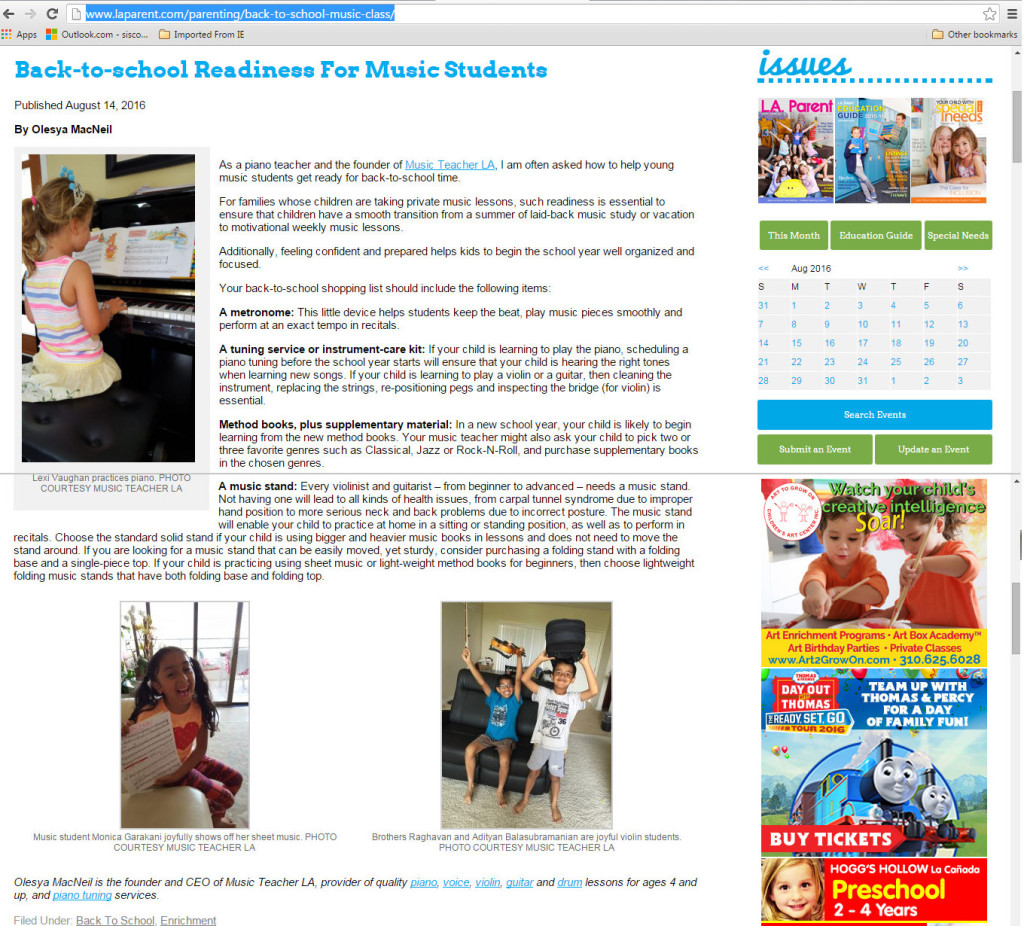 often asked how to help young music students get ready for back-to-school time.
often asked how to help young music students get ready for back-to-school time.
For families whose children are taking private music lessons, such readiness is essential to ensure that children have a smooth transition from a summer of laid-back music study or vacation to motivational weekly music lessons.
Additionally, feeling confident and prepared helps kids to begin the school year well organized and focused.
Your back-to-school shopping list should include the following items:
A metronome: This little device helps students keep the beat, play music pieces smoothly and perform at an exact tempo in recitals.
A tuning service or instrument-care kit: If your child is learning to play the piano, scheduling a piano tuning before the school year starts will ensure that your child is hearing the right tones when learning new songs. If your child is learning to play a violin or a guitar, then cleaning the instrument, replacing the strings, re-positioning pegs and inspecting the bridge (for violin) is essential.
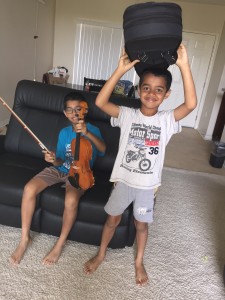 Method books, plus supplementary material: In a new school year, your child is likely to begin learning from the new method books. Your music teacher might also ask your child to pick two or three favorite genres such as Classical, Jazz or Rock-N-Roll, and purchase supplementary books in the chosen genres.
Method books, plus supplementary material: In a new school year, your child is likely to begin learning from the new method books. Your music teacher might also ask your child to pick two or three favorite genres such as Classical, Jazz or Rock-N-Roll, and purchase supplementary books in the chosen genres.
A music stand: Every violinist and guitarist – from beginner to advanced – needs a music stand. Not having one will lead to all kinds of health issues, from carpal tunnel syndrome due to improper hand position to more serious neck and back problems due to incorrect posture. The music stand will enable your child to practice at home in a sitting or standing position, as well as to perform in recitals. Choose the standard solid stand if your child is using bigger and heavier music books in lessons and does not need to move the stand around. If you are looking for a music stand that can be easily moved, yet sturdy, consider purchasing a folding stand with a folding base and a single-piece top. If your child is practicing using sheet music or light-weight method books for beginners, then choose lightweight folding music stands that have both folding base and folding top.
Like this article? Please share!
Read more educational articles at https://MusicTeacherLA.com/Press/
 often asked how to help young music students get ready for back-to-school time.
often asked how to help young music students get ready for back-to-school time.For families whose children are taking private music lessons, such readiness is essential to ensure that children have a smooth transition from a summer of laid-back music study or vacation to motivational weekly music lessons.
Additionally, feeling confident and prepared helps kids to begin the school year well organized and focused.
Your back-to-school shopping list should include the following items:
A metronome: This little device helps students keep the beat, play music pieces smoothly and perform at an exact tempo in recitals.
A tuning service or instrument-care kit: If your child is learning to play the piano, scheduling a piano tuning before the school year starts will ensure that your child is hearing the right tones when learning new songs. If your child is learning to play a violin or a guitar, then cleaning the instrument, replacing the strings, re-positioning pegs and inspecting the bridge (for violin) is essential.
 Method books, plus supplementary material: In a new school year, your child is likely to begin learning from the new method books. Your music teacher might also ask your child to pick two or three favorite genres such as Classical, Jazz or Rock-N-Roll, and purchase supplementary books in the chosen genres.
Method books, plus supplementary material: In a new school year, your child is likely to begin learning from the new method books. Your music teacher might also ask your child to pick two or three favorite genres such as Classical, Jazz or Rock-N-Roll, and purchase supplementary books in the chosen genres.A music stand: Every violinist and guitarist – from beginner to advanced – needs a music stand. Not having one will lead to all kinds of health issues, from carpal tunnel syndrome due to improper hand position to more serious neck and back problems due to incorrect posture. The music stand will enable your child to practice at home in a sitting or standing position, as well as to perform in recitals. Choose the standard solid stand if your child is using bigger and heavier music books in lessons and does not need to move the stand around. If you are looking for a music stand that can be easily moved, yet sturdy, consider purchasing a folding stand with a folding base and a single-piece top. If your child is practicing using sheet music or light-weight method books for beginners, then choose lightweight folding music stands that have both folding base and folding top.
Like this article? Please share!
Read more educational articles at https://MusicTeacherLA.com/Press/
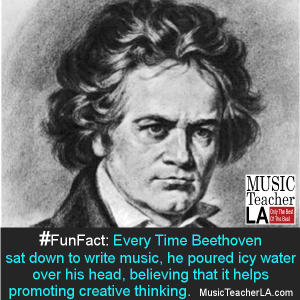 He was known to take long, solitary walks through the Viennese forest, shut the doors of his study room and scream while composing new musical pieces, and pour icy cold water over his head to help promote creative breakthrough.
He was known to take long, solitary walks through the Viennese forest, shut the doors of his study room and scream while composing new musical pieces, and pour icy cold water over his head to help promote creative breakthrough.

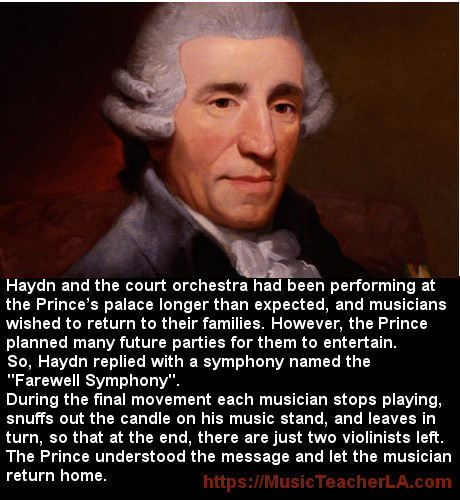
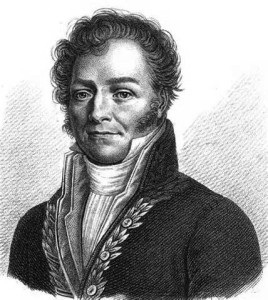
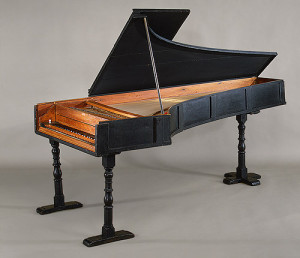 of the player's key press, allowing for some notes to be played louder or quieter than others, which , something that the earlier instruments could not do. That is why the original piano was named pianoforte, which means "quiet-loud" in Italian.
of the player's key press, allowing for some notes to be played louder or quieter than others, which , something that the earlier instruments could not do. That is why the original piano was named pianoforte, which means "quiet-loud" in Italian.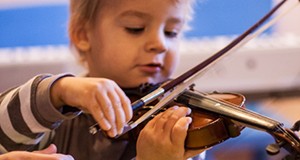
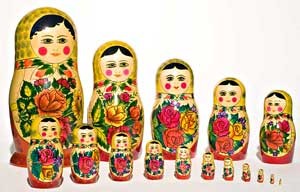
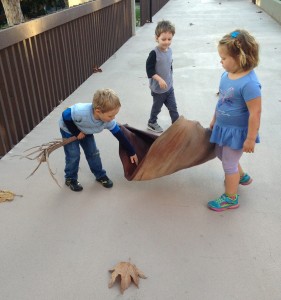
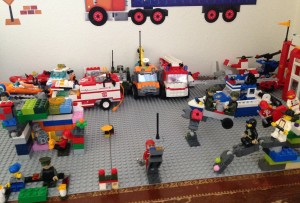
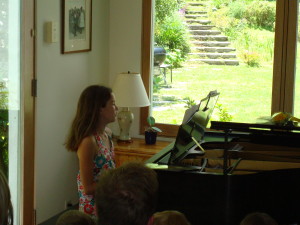
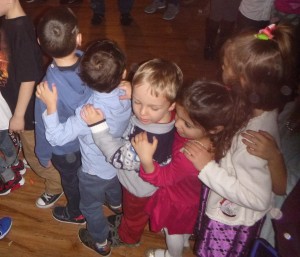 and our families were
and our families were 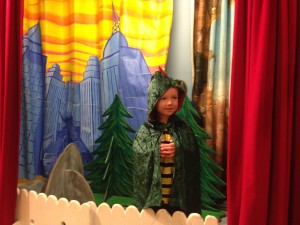 meeting weekly for cheerful sport, art or simple fun activities. One of those gatherings was the theatrical shows, which we were staging in someone’s living room and recording on the video. We created names for our shows, plots, actors, roles, and ridiculous and hilarious outfits. The shows were frequently interrupted by our laughter during each performance, and then there were even more laughter during video viewing times.
meeting weekly for cheerful sport, art or simple fun activities. One of those gatherings was the theatrical shows, which we were staging in someone’s living room and recording on the video. We created names for our shows, plots, actors, roles, and ridiculous and hilarious outfits. The shows were frequently interrupted by our laughter during each performance, and then there were even more laughter during video viewing times.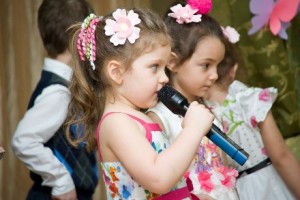 making up songs and performing as a group is an incredible, relaxing and enjoyable activity for a whole family.
making up songs and performing as a group is an incredible, relaxing and enjoyable activity for a whole family.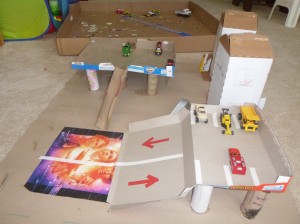
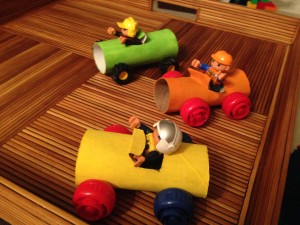 and being thanked by the personnel for recycling them. Those huge cartoon papers along with the paints (from oil to water-based), brushes, stickers, cut-out stamps made of potatoes, bell peppers, and such unable my kids and I create roads, cities, holiday arts, music instruments (see some of our projects here:
and being thanked by the personnel for recycling them. Those huge cartoon papers along with the paints (from oil to water-based), brushes, stickers, cut-out stamps made of potatoes, bell peppers, and such unable my kids and I create roads, cities, holiday arts, music instruments (see some of our projects here: 
